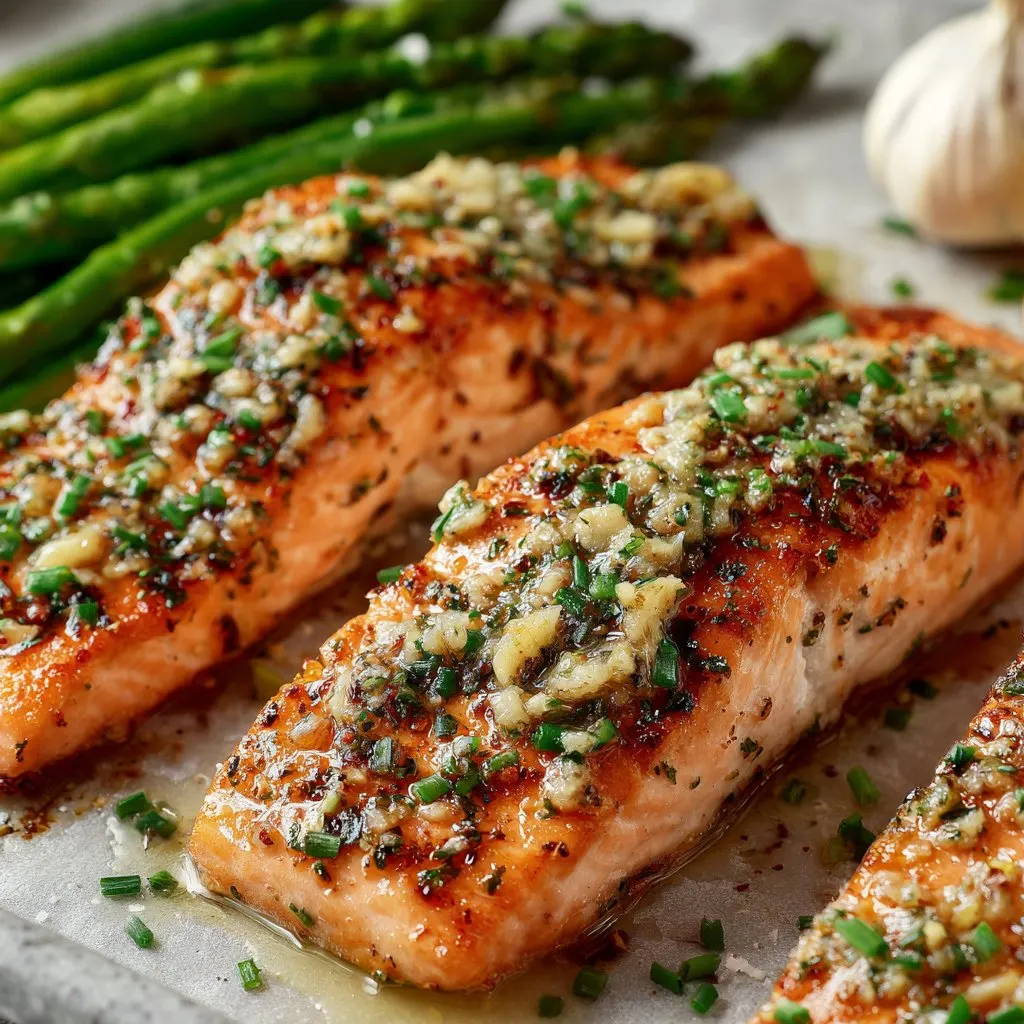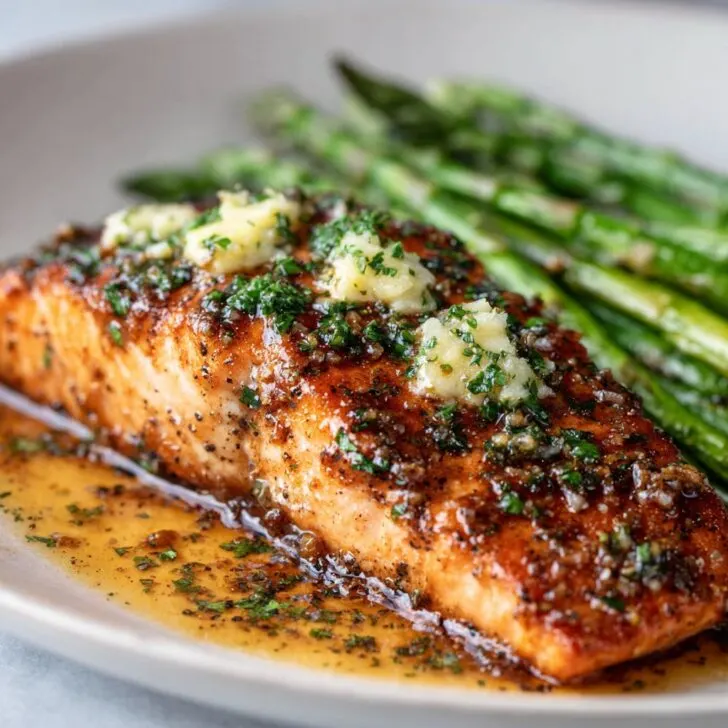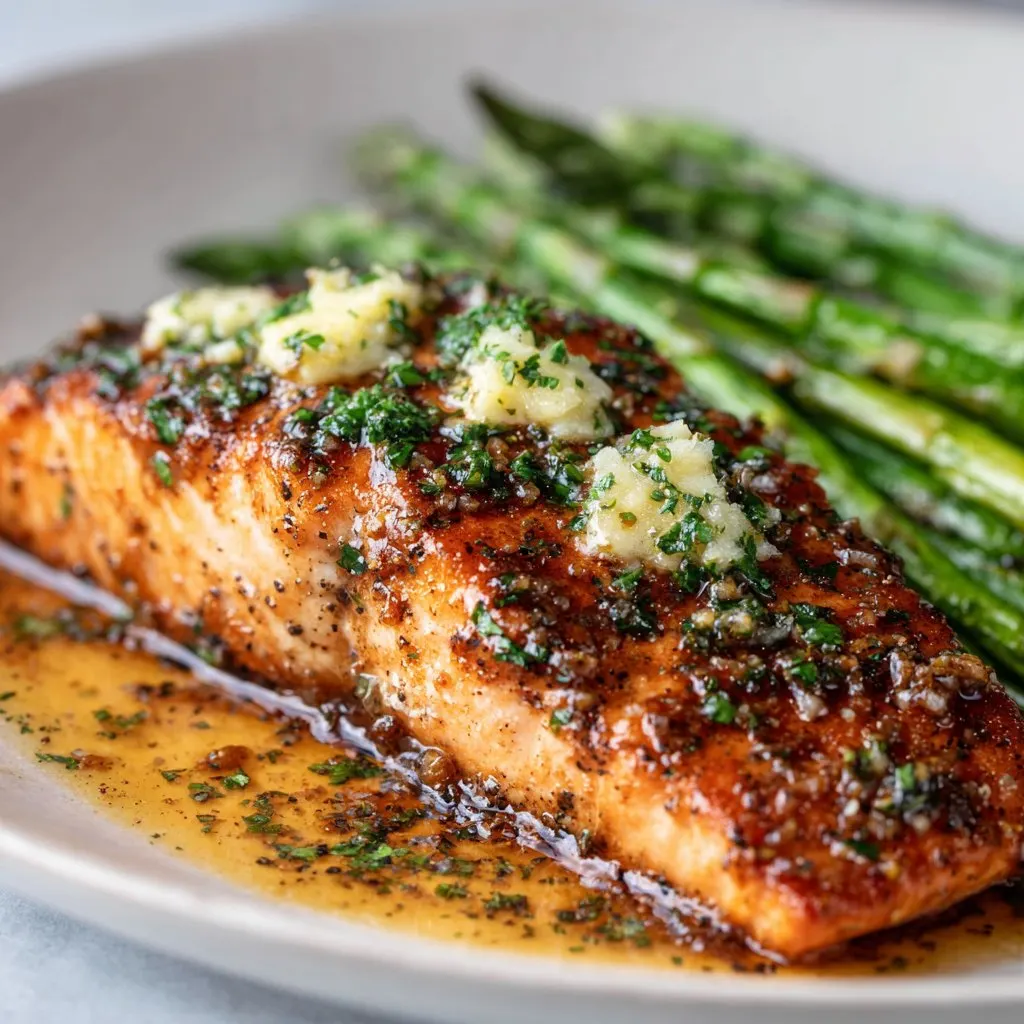Okay, So Here’s Why I Even Started Making This Salmon
Let me tell you, I never meant to become “the salmon person” in my family. It kind of happened by accident. One night I forgot I was supposed to defrost the chicken, so I rummaged through the freezer and found a lonely salmon fillet hiding at the back (probably from the last time I thought I’d eat healthy—ha). Anyway, I threw together some honey, garlic, and butter—just the basics, nothing too fancy—and boom, now it’s requested at every birthday and random Tuesday. My cousin even tried to get me to make it at her barbecue, but I drew the line at grilling fish in someone else’s kitchen. Not happening.
Why I Keep Coming Back to This (And Maybe You Will Too?)
I make this when I want to look like I’ve got my life together—especially when I so don’t. My family goes crazy for this because it’s one of those meals that tastes like it took hours, but you barely spend any time at the stove (except when the butter tries to spit at you—seriously, why does it do that?).
And, you know, sometimes I’ll make it just for myself, because it’s comforting after a long day. If you’re having one of those weeks, this is like a reset button for your taste buds. Also, the sticky honey glaze looks like you tried way harder than you did. Win-win.
Ingredients (With Some Honestly-I-Don’t-Always-Use-This Substitutions)
- 4 salmon fillets (about 150g each, but it’s not like I measure every time)
- 2 tablespoons honey (sometimes I use maple syrup if I’m out—nobody’s noticed… yet)
- 3 tablespoons unsalted butter (salted works fine too, just skip added salt)
- 4 garlic cloves, minced (I’ve used the jar stuff in a pinch, but fresh is better)
- Juice of half a lemon (or a splash of bottled lemon juice—my grandmother thinks this is sacrilege, but whatever)
- Salt and pepper to taste (I always forget to measure this, just sprinkle it on)
- Fresh parsley for garnish (optional, but it does make it look nice for Instagram)
How I Actually Make This (With a Few Detours)
- First, preheat your oven to 200°C (about 400°F). Or don’t—sometimes I just use the stovetop if I’m too impatient. Either way, line a baking tray with foil (less cleanup—future you will thank you).
- Pat the salmon dry with some kitchen roll. Not totally sure why, but someone on a cooking show said it helps the glaze stick. Season with salt and pepper. This is where I get distracted and forget the pepper, so double check!
- In a small saucepan, melt the butter over medium heat—don’t wander off, it burns fast. Add the minced garlic and sizzle for about a minute, just until it smells amazing (and don’t let it go brown, or you’ll be sad).
- Now, pour in the honey and lemon juice. Stir it all together. Let it bubble for a minute or two. It’ll start to get glossy. This is where I usually sneak a taste with a spoon—for research, obviously.
- Place the salmon fillets on the tray. Pour that lovely golden sauce all over them. Get every bit—I sometimes tilt the tray side to side, which is probably not recommended but it works.
- Bake for 12-15 minutes. But honestly, start checking at 10. It should look opaque and flake easily when you prod it with a fork. If you want a bit of caramelized top, pop it under the grill for a minute (but watch it—things go from golden to burnt faster than you think, trust me).
- Scatter some parsley on top. Admire your handiwork, then dig in!
Notes From My (Not Always Successful) Attempts
- If you use wild salmon, it cooks a little quicker and sometimes comes out drier (at least for me). Farmed salmon is a bit more forgiving.
- Actually, I find it works better if you let the salmon sit out for a few minutes before cooking; straight from the fridge sometimes makes it cook unevenly. Learned that one the hard way.
- The first time I made this, I totally forgot to spray the foil. Peeling fish skin off aluminum is a form of punishment I wouldn’t wish on anyone.
Other Ways I’ve Tried (Some Hits, One Miss)
- Used sriracha in the glaze once for a sweet-spicy kick—my husband loved it, but the kids were less enthusiastic.
- Swapped out lemon for orange zest and juice: different, but kind of lovely.
- Tried baking it in parchment instead of foil; it steamed rather than glazed, and, well, I probably won’t do that again soon.
Do You Really Need Special Equipment?
Technically, I use a rimmed baking tray and a small saucepan. But if you don’t have a saucepan, just use a frying pan. And if you’re out of foil, parchment works (just don’t expect crispy bits). I’ve even used a cake tin in a pinch—no shame in kitchen improvisation.

Storing Leftovers (If There’s Any, Which Is Rare)
Store leftover salmon in an airtight container in the fridge. It’ll keep for up to 2 days, though honestly, in my house it never lasts more than a day! I think it actually tastes better the next day, cold, on top of a salad. Or just eaten straight from the fridge with a fork (no judgment).
How I Like to Serve This (Plus a Random Tradition)
I usually serve this salmon with some roasted potatoes and green beans—classic, right? My uncle swears it’s better with steamed rice, and sometimes my kids demand mac and cheese on the side, so…anything goes. For some reason, we always end up eating it while watching old episodes of Bake Off. Go figure.
Things I’ve Learned the Hard Way (Pro Tips, Kind Of)
- Don’t rush the garlic. I once tried to save time by turning up the heat, and the butter browned too fast—totally different flavor. Not as nice.
- Don’t overdo the honey. I got heavy-handed once, and it was so sweet we basically ate dessert for dinner.
- And always taste your sauce before pouring it over the fish—actually, that might be the best part.
Real Questions I’ve Actually Gotten (With Real Answers)
- Can I use frozen salmon? Yep! Thaw it first, though—otherwise the sauce just slides right off and you end up with a weird soupy mess.
- Is there a dairy free version? Probably. I’ve tried using olive oil instead of butter and it’s…different. Coconut oil works but gives it a whole other vibe (not my fave, but maybe you’ll like it).
- Can I make this ahead? Sort of. You can prep the sauce and marinate the salmon for a few hours, but I wouldn’t bake it ahead, it dries out.
- What wine goes with this? I’m no sommelier, but I usually just pour a glass of whatever white I’ve got open. If you want more official advice, I sometimes check recommendations on Vivino or Wine Folly.
- Can I grill instead of bake? You can try, but keep a close eye—honey burns fast. I ruined a perfectly good fillet that way last summer. Lesson learned.
Honestly, this recipe isn’t precious. Tweak it, play, improvise. And if you have an epic fail, just call it “deconstructed” and serve it anyway (that’s what I do). Enjoy!
Ingredients
- 4 salmon fillets (about 6 oz each)
- 2 tablespoons honey
- 3 tablespoons unsalted butter
- 3 garlic cloves, minced
- 1 tablespoon fresh lemon juice
- 1 tablespoon soy sauce
- 1 tablespoon olive oil
- Salt and black pepper to taste
- Chopped fresh parsley for garnish (optional)
Instructions
-
1Pat the salmon fillets dry and season both sides with salt and black pepper.
-
2In a small bowl, whisk together honey, soy sauce, and lemon juice.
-
3Heat olive oil in a large skillet over medium-high heat. Add salmon fillets, skin side down, and cook for 3-4 minutes until golden. Flip and cook for another 2-3 minutes.
-
4Reduce heat to medium. Add butter and minced garlic to the skillet. Once the butter melts, pour the honey mixture over the salmon.
-
5Spoon the sauce over the salmon as it cooks for another 2-3 minutes, until the salmon is cooked through and glazed.
-
6Remove from heat, garnish with chopped parsley if desired, and serve immediately.
Approximate Information for One Serving
Nutrition Disclaimers
Number of total servings shown is approximate. Actual number of servings will depend on your preferred portion sizes.
Nutritional values shown are general guidelines and reflect information for 1 serving using the ingredients listed, not including any optional ingredients. Actual macros may vary slightly depending on specific brands and types of ingredients used.
To determine the weight of one serving, prepare the recipe as instructed. Weigh the finished recipe, then divide the weight of the finished recipe (not including the weight of the container the food is in) by the desired number of servings. Result will be the weight of one serving.
Did you make this recipe?
Please consider Pinning it!!


